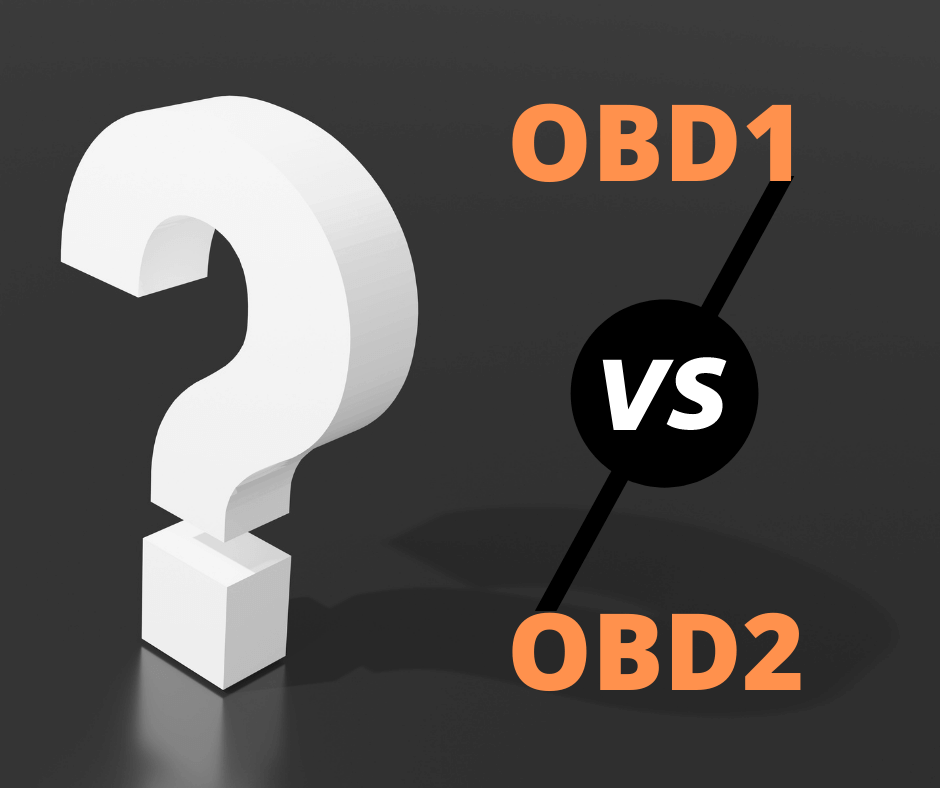OBD1 vs OBD2: Which protocol does my vehicle use?
Date Posted:3 June 2022

Is your vehicle using OBD1 or OBD2 protocol? A very important question in the OBD scan tool world. Why? Well generally, there are 2 types of diagnostic scan tools out there: those that work with OBD2 vehicles only and those that cover both OBD1 and OBD2, and this is the key factor in determining compatibility between a scan tool and your vehicle.
OK, maybe we should slow down, clarify a few things, and get back to the basics for those of you to who this sounds a little Alien. OBD stands for On-Board Diagnostics and is essentially a computer inside of your vehicle that tracks and regulates your car's performance and gives you access to the status of the various vehicle sub-systems within your vehicle e.g. engine, body, transmission, brakes etc.
OBD1
OBD1 was introduced in the early 90s and vehicles had to be equipped with OBD1 by law to detect engine issues and report trouble codes, mainly to control vehicle emissions. However, the key draw drawback with OBD1 was that it wasn’t standardized across manufacturers which meant OBD1 scan tools often would only work on a specific make of car. In addition to this, information was often limited and trouble codes again were not standardised across the board
OBD2
OBD2 introduction was staggered for the major automotive markets, starting with the US, followed by Europe, and lastly Australia.
US - 1996
Europe – 2001 (Diesel) & 2003 (Petrol)
Australia – 2006 (mandatory on all vehicles from 2010)
[OBD2 Introduction[
Unlike OBD1 vehicles, OBD2-equipped vehicle computers are compatible and support any generic OBD2 scan tool on the market these days. The most significant improvement came with the standardisation of the OBD port, which generally is a 16-pin (for your standard passenger vehicle), meaning you can generally buy a single OBD2 scanner and retrieve diagnosis information on a wide range of makes/manufacturers of vehicles. As with all technology over the last few decades, OBD diagnostic scan tools are no exception, with the new and improved OBD2 protocol giving you even more capabilities such as real-time data, bi-directional tests, programming, and much more.
OBD1 vs OBD2 – Australia
So, back to the original question: Is my vehicle ODB1 or OBD2? As a guideline, we tend to use the official OBD2 introduction years in each region as a base guideline. For example, generally Australian market vehicles manufactured prior to 2006 are likely to follow OBD1 protocol. Of course, this rule cannot be applied to all makes/models of vehicles and does vary.
Our advice would be to use the above as a guideline but if you’re still unsure, also check out our OBD2 Australian compatibility page for specific information about different makes/models OBD protocol. If you’re still unsure, you can always play safe and purchase a scan tool that is capable of reading both OBD1 and OBD2 vehicles, thus reducing the risk of compatibility issues, especially for your older vehicles.
As always, if you have any other questions, you can always contact us directly.









